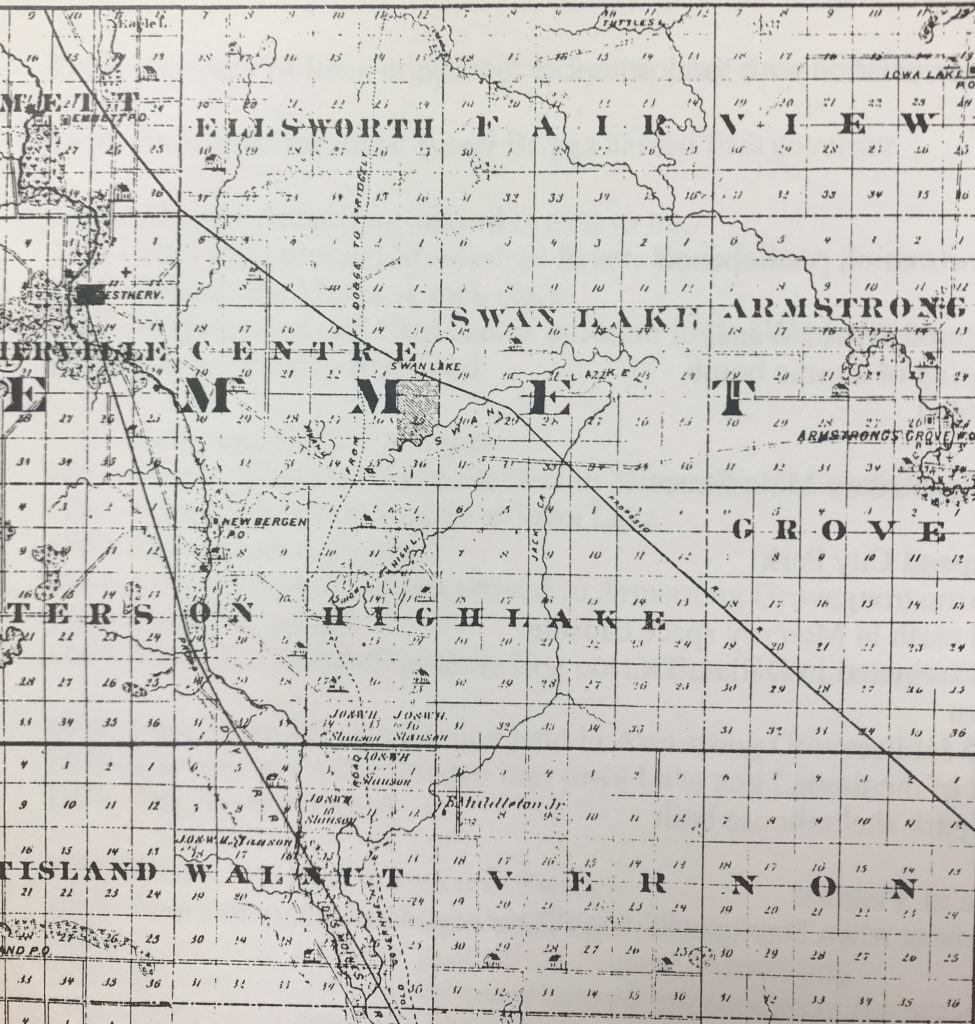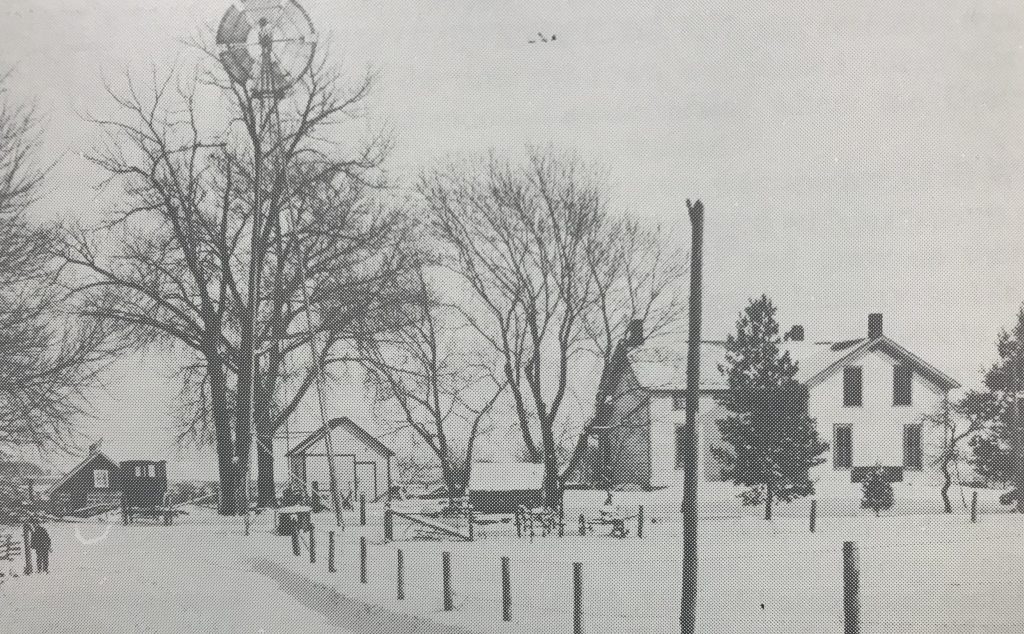Perils for Immigrants and the Emmet County Winter of 1870
Emmet county, Iowa
People usually migrate because of something they want to get away from and something they want to move towards. There are hazards in that movement; one of them is the weather.

The history of many places fostered such stories of immigration. One in Emmet County concerns a Norwegian immigrant boy named Ole Knudtson who came with his family to Emmet County sometime after the U.S Civil War. On the 18th of January 1870 Ole went out to look at some traps he had laid. The furthest was about a mile from the family’s home. While he was out, a snow storm came up and quickly intensified. A familiar nineteenth-century story of early Iowa, Ole lost his way in the white-out conditions created by the wind and the snow. Later reports claimed that his parents were not worried when night came on and their fourteen-year-old son had not returned. They “knew their son was a hardy little fellow who had demonstrated on previous occasions that he was able to take care of himself.” Families sometimes get it wrong. The next morning when it was discovered that Ole had not taken shelter with neighbors or anywhere else that could be readily seen, the neighbors instituted a search. But it was Ole’s father who found the boy’s body.
Another Norwegian immigrant did not lose his life in a blizzard, but family assumptions seem to have played a role in his solitary presence in Emmet County and his death there. Nicolai Alexander Ibsen, brother of the famous Norwegian playwright Henrik Ibsen, emigrated to the United States in 1870, making his way to Emmet County, Iowa, after time spent in Chicago then Wisconsin. He died near Estherville in the spring of 1888.

The youngest of six children, Nicolai was raised in a home described as limited in resources and affection. As a young man, he twice attempted business ventures in Norway with his brother Johan. These attempts both ended in failure. Unwilling to take aid from a family that, at least in some of its members, disapproved of his failures, he instead emigrated to the U.S. “A reticent, reclusive sort of man,” he did not tell his American neighbors much about his life or his journey. In Chicago he is said to have pawned some valuables; in Wisconsin, he bought 40 acres and a herd of sheep. Not long after, he sold those 40 acres and bought another 40 in Emmet County where he moved with the sheep. Perhaps solitary sheepherding proved too difficult because he then sold the sheep and worked as a cattle herder for several settlers in the Norwegian community north of Estherville. One neighbor remembered that Nicolai’s sister Hedvig had written him urging him to return to Norway where she could care for him, but he never left. He died at the home of his employer Mikel Berhow when he was in his 50s.
Olav Myre remembered Nicolai as a gentlemanly, kindly, courteous man with cultured speech if shabby clothes, a man who followed his famous brother’s career and would share a photograph of his brother with a few neighbors.
Though there was a strong family resemblance between Henrik and Nicolai Ibsen, their funerals and sites of burial were very different. When Olav Myre wrote Henrik Ibsen to inform him of his brother’s death, the playwright instructed his son in Washington, D.C. to send money for the burial if it was needed. Myre declined the help. Neighbors sold Nicolai’s possessions and raised sufficient funds for burying him. “We gave him a good funeral,” Myre later recalled. “We had no minister then, but someone read a chapter from the Bible and one of the old men prayed, and there was a hymn. He was one of us,–he came from the old county and we buried him with reverence. The inscription carved on his tombstone we used because it was found among his belongings. It read, ‘by strangers honored and by strangers mourned.’”
Source: SHSI: History of Emmet County and Dickinson County, Iowa, Chicago 1917; Cyrus F. Savereide, “Henrik Ibsen’s Brother,” Norden 5 (May 5, 1933).
